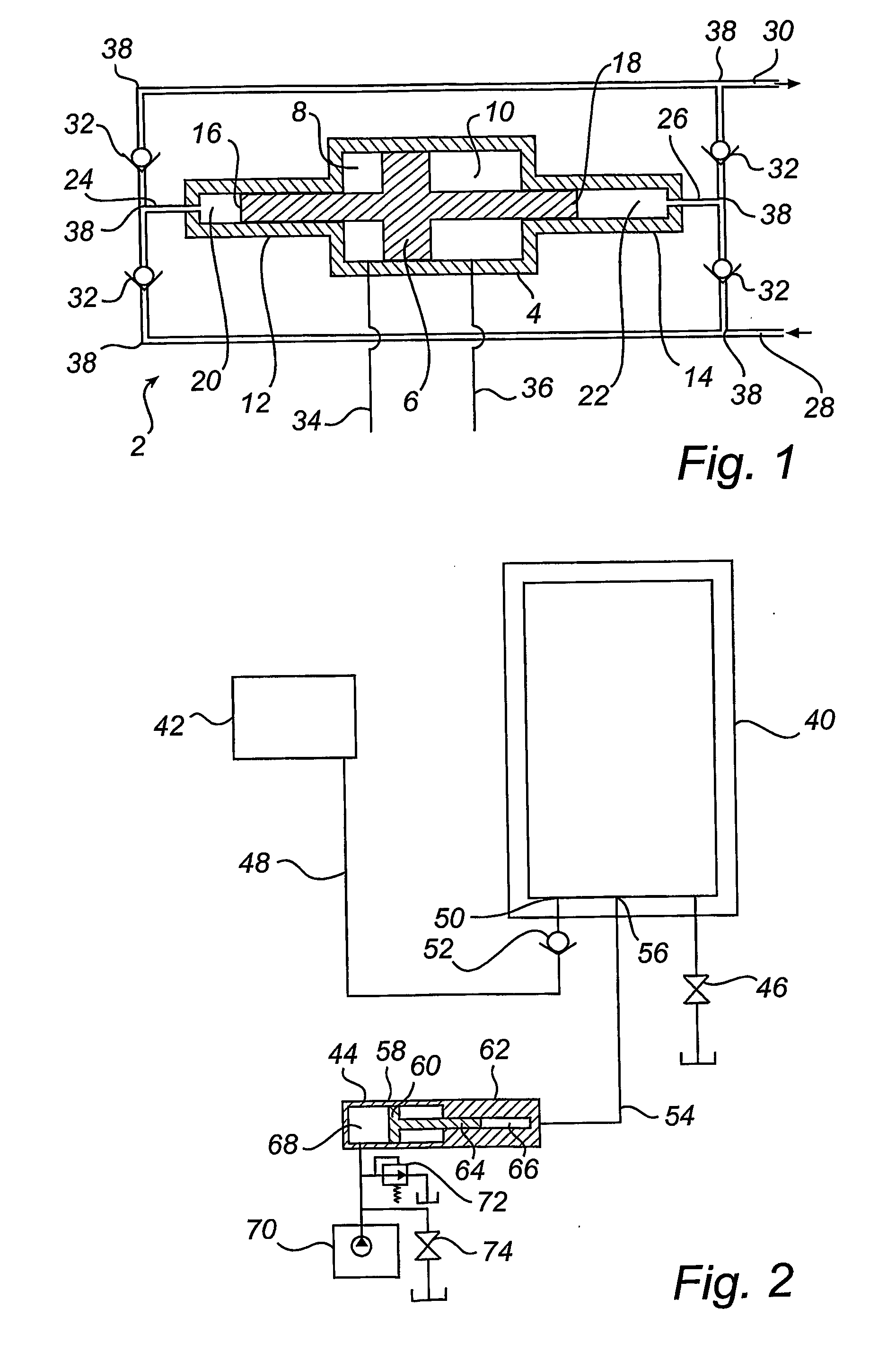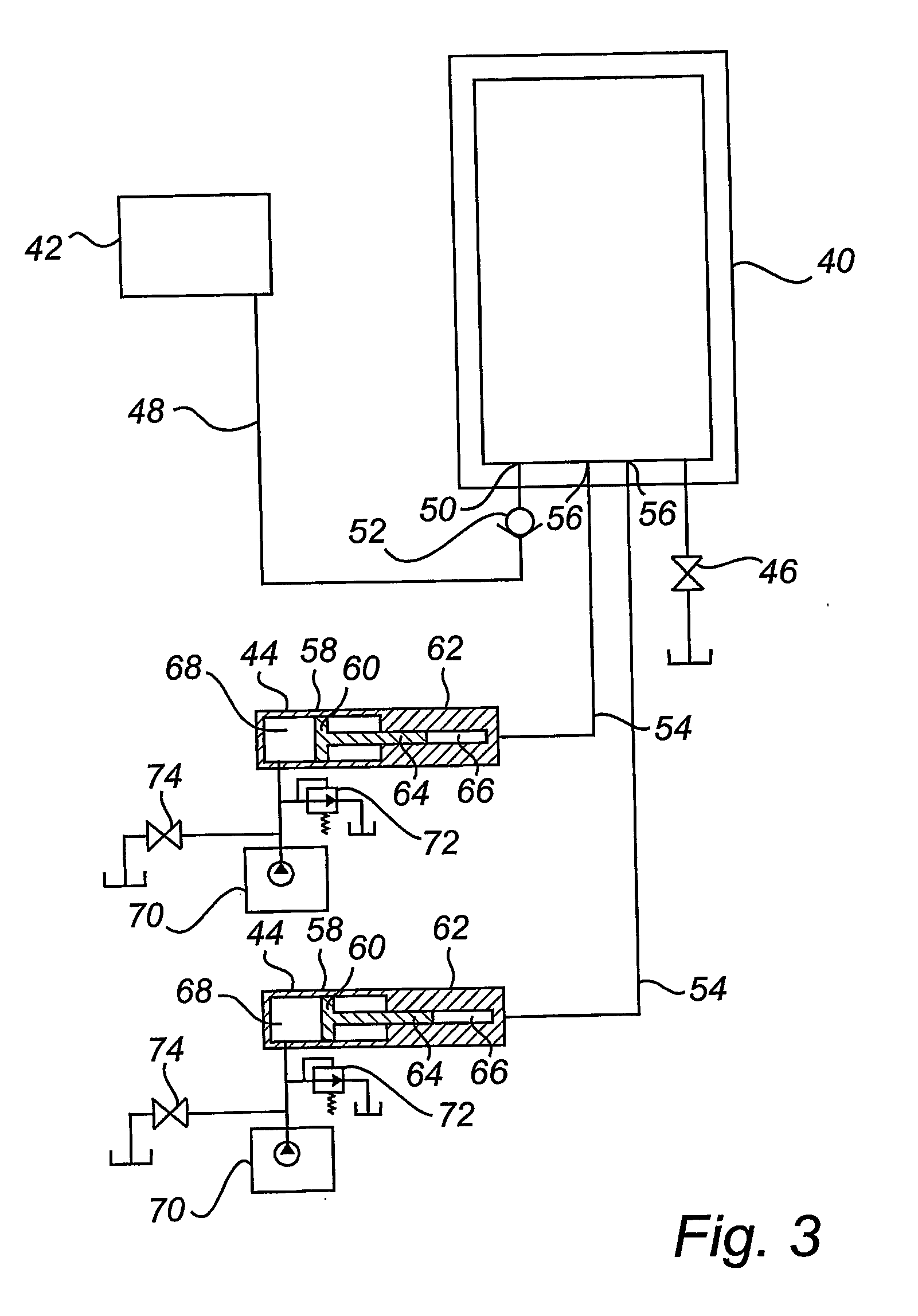High pressure pressing device and method
a pressing device and high pressure technology, applied in the direction of fluid couplings, couplings, machines/engines, etc., can solve the problems of high pressure level mechanical stress on certain components, such as valves and piping intersection points, subject to considerable fatigue, and the material limit of pumps, etc., to achieve rapid destruction of safety valves, increase volume available, and hold at the safety level
- Summary
- Abstract
- Description
- Claims
- Application Information
AI Technical Summary
Benefits of technology
Problems solved by technology
Method used
Image
Examples
Embodiment Construction
[0048] The drawings are merely illustrated for the ease of understanding, and are therefore only schematic and not to scale, for the sake of clarity.
[0049]FIG. 1 is a schematic longitudinal section through a standard hydraulic pumping device 2 according to the prior art. The pumping device 2 comprises a low pressure cylinder 4 in which a low pressure piston 6 is axially displaceable. The low pressure cylinder 4 is thus divided into two sides 8,10 and is filled on both sides with a hydraulic medium. On each side of the low pressure cylinder 4 and coaxially therewith, a respective high pressure cylinder 12,14 is arranged. Each high pressure cylinder 12,14 is provided with a high pressure piston 16,18 which is arranged to be axially displaceable therein. The two high pressure pistons 16,18 are secured to the low pressure piston 6. The two high pressure cylinders 12,14 and the high pressure pistons 16,18 define two high pressure chambers 20,22. Conduits 24,26 are arranged in communicat...
PUM
 Login to View More
Login to View More Abstract
Description
Claims
Application Information
 Login to View More
Login to View More - R&D
- Intellectual Property
- Life Sciences
- Materials
- Tech Scout
- Unparalleled Data Quality
- Higher Quality Content
- 60% Fewer Hallucinations
Browse by: Latest US Patents, China's latest patents, Technical Efficacy Thesaurus, Application Domain, Technology Topic, Popular Technical Reports.
© 2025 PatSnap. All rights reserved.Legal|Privacy policy|Modern Slavery Act Transparency Statement|Sitemap|About US| Contact US: help@patsnap.com



